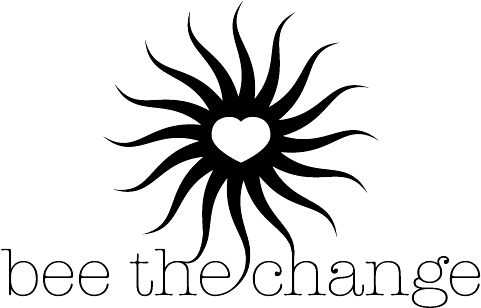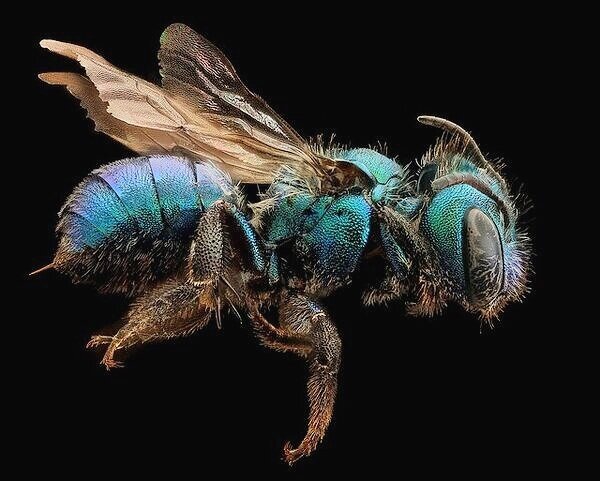Pollinator of the Month: The Blue Orchard Mason Bee
Osmia Lignaria: The Blue Orchard Mason Bee
https://wshg.net/blog/gardeners-corner09/mason-bee
Spotting a Blue Orchard Mason Bee: Most people associate bees with brown and orange stripes (like the kind we see on the European Honeybee), but the Blue Orchard Mason Bee goes against these expectations. These bees (roughly the same size as a honeybee) can be identified by their beautiful metallic blue-green color. If you're unsure about the identity of a bee, we recommend taking a picture and comparing it to images online or in your favorite insect-identification book -- it's an easy and harmless way to learn more about the pollinators that we share our environment with.
Above: A Blue Orchard Mason Bee pollinating a fruit blossom
Mason Bees and Agriculture: Bees of the genus Osima, colloquially called "mason bees," are extraordinary pollinators, often outstripping the European Honeybee in plants-visited-per-minute and effectiveness of pollen transfer between plants. Furthermore, many species of Osima prefer to visit flowers in the rose family, which includes crops like apples, cherries, plums and almonds. The origin of the name "Orchard Mason Bee" lies in this preference for crops grown in orchards across the U.S. and around the globe.
A Globetrotting Bee: Osmia lignaria is just one of 500 species of Osmia that can be found around the world. Osmia lignaria are found in our region in Vermont and throughout the eastern U.S.. Other species of Osmia are found everywhere from Death Valley, California to alpine peaks in Utah, to the apple orchards of Japan.
Finding a Home: Orchard Mason Bees also derive part of their name from their affinity for building homes out of mud and clay. These busy workers use their strong jaws to scoop and carry mud to build their new nests. Mason Bees eagerly transform all sorts of empty cavities into nests for their young. Various cracks, crevices and holes might become the nest of an Orchard Mason Bee. Female bees create tube-like nests, and will lay their eggs in a series of "cells" within the tube, separated from each other by walls made of mud, clay and plant matter.
Bringing Orchard Mason Bees to Your Backyard: Home gardeners can easily support Blue Orchard Mason Bees by hanging an Orchard Mason Bee Hive near their home, yard or garden. Providing this vital habitat will support Orchard Mason Bee populations, which will in turn supply excellent pollination for your fruit trees or garden. Furthermore, Orchard Mason Bees are famously shy and gentle, and they very rarely sting. In other words: these bees make exceptionally peaceful cohabitants and gardening companions!
To Learn More: Sources
https://www.fs.fed.us/wildflowers/pollinators/pollinator-of-the-month/mason_bees.shtml
Image Source: https://www.nwpb.org/2018/04/27/could-blue-bees-be-better-for-northwest-crops/


